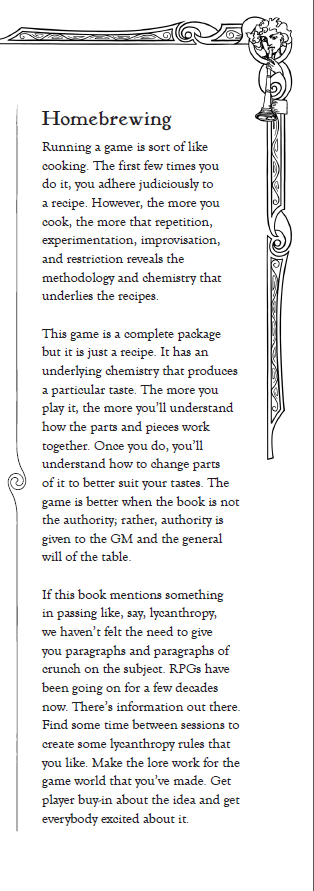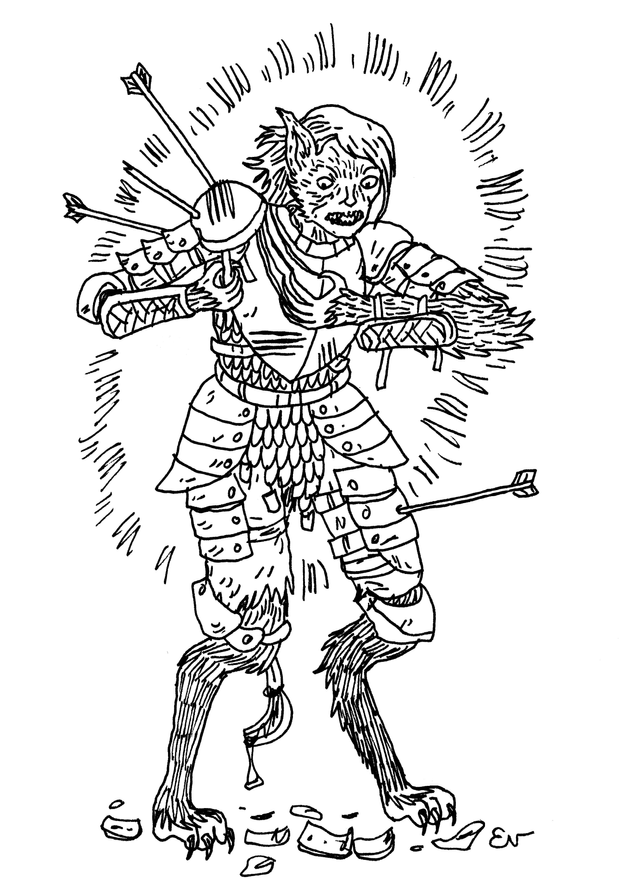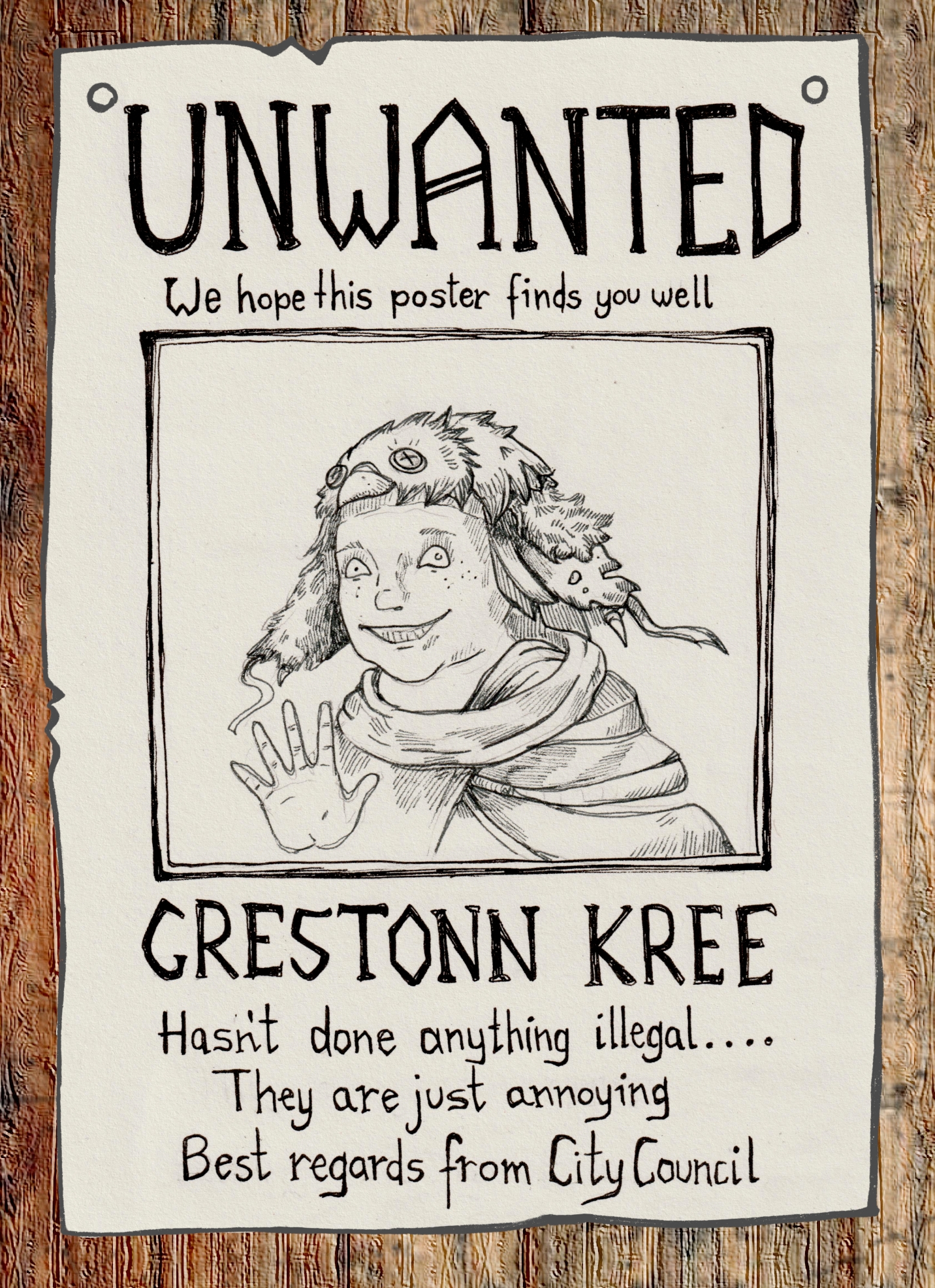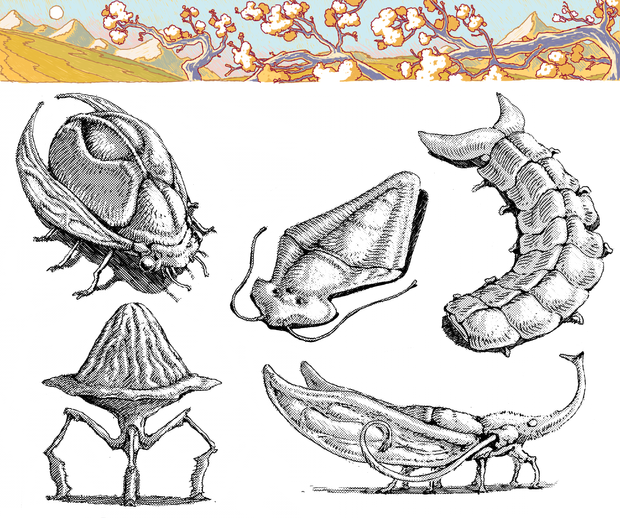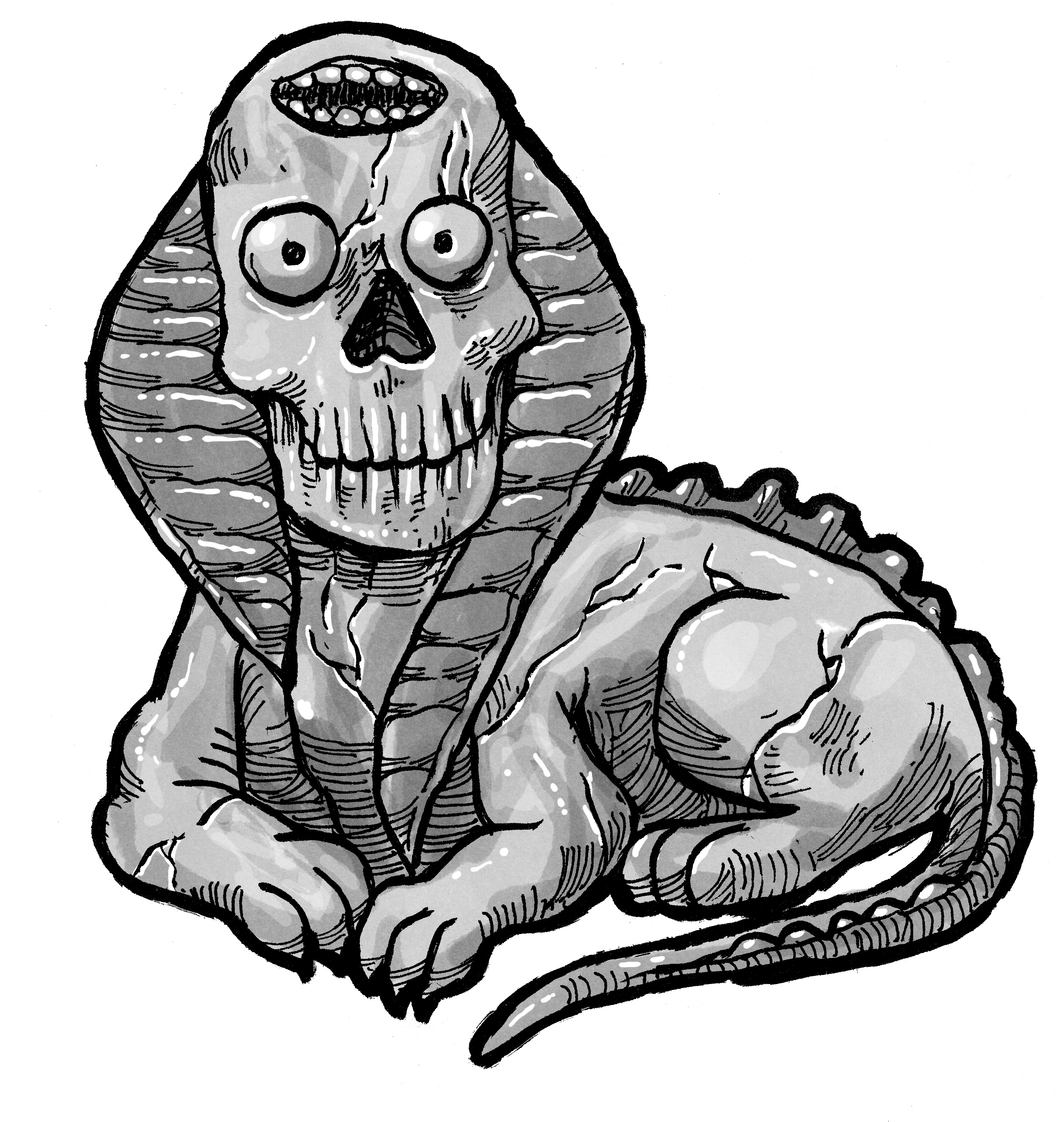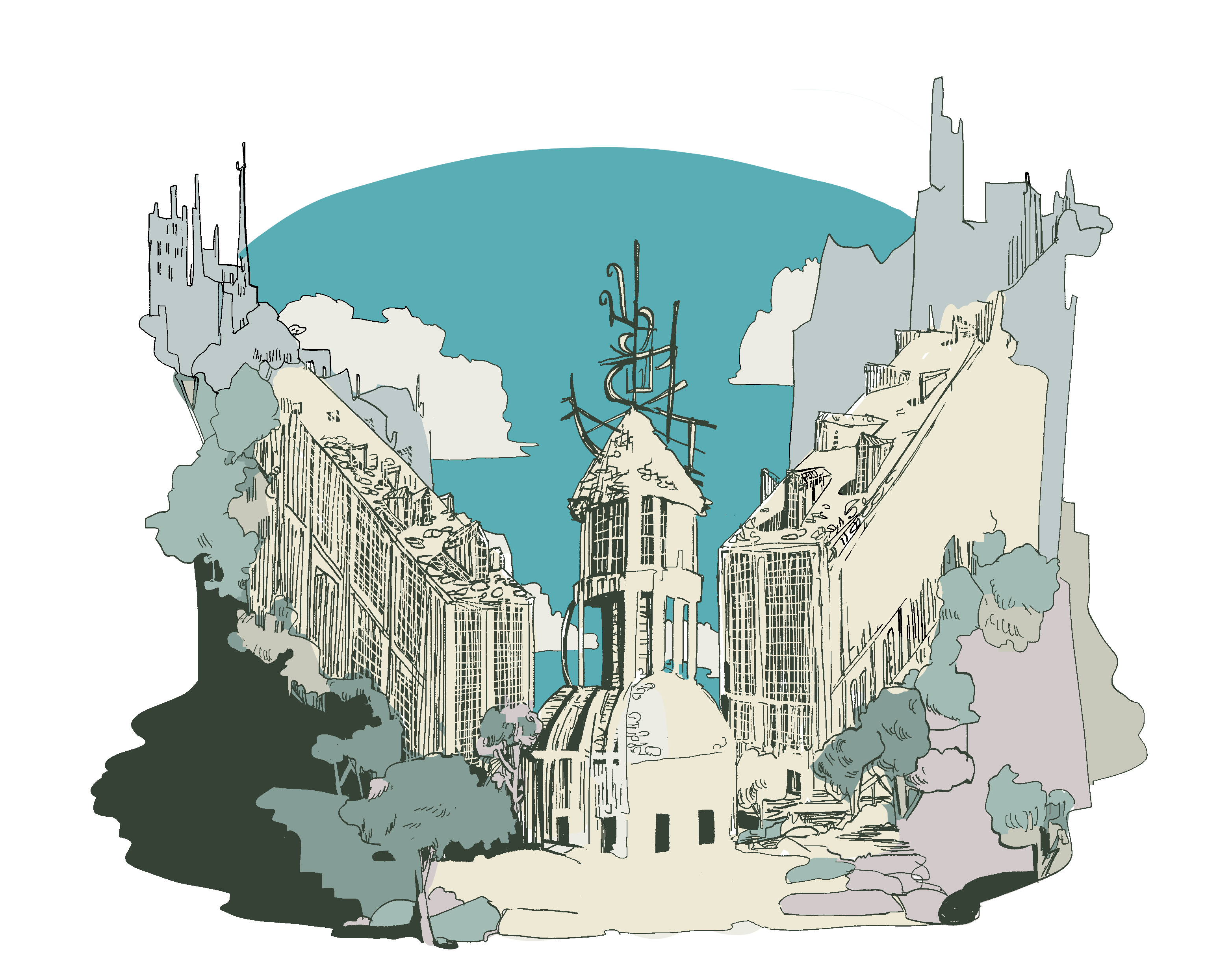Somewhere in the Underworld, there are cloning machines that endlessly replicate the flesh of a woman born ages ago named Xania.
 |
| It's all Xania |
At some point, these processes went wrong and some of the clones escaped. Fungus was involved, with the fungoid's natural powers of mimicry being cross-pollinated into the cloning sequences. Instead of being perfect clones, they suffered physical and mental abnormalities: bleached white skin, bright and unnatural hair colors, swollen red noses, a lack of emotional regulation. These twisted clones are called "clowns."
Clowns
 |
| by tori-otto |
The clown begins its lifecycle as a "clown slug" (sometimes also called a "clown tadpole"). These creatures are about a yard long: a slimy slug-like "foot" attached to a grotesque humanoid face: white skin speckled with a unique pattern, red lips pulled into a rictus grin, swollen red nose, curly bright hair. They move slowly on land but can swim quickly through the water. Clown slugs hatch from eggs laid by a clown queen.
Dealing with a clown slug is more like navigating a hazard than a battle. Avoiding a clown slug is a test of Swords.
- If you have a free hand, you gain favor on the test.
- If you are carrying a weapon, you can slay the clown slug if you succeed on the test.
- If you are carrying a torch or lantern, you can choose to Destroy the light source to slay the clown slug if you succeed on the test.
- On a failure, the clown slug latches onto your face and force feeds you its clown juice before dropping dead and shriveling up. You gain the clowned affliction.
- On a great failure, the affliction's final stage occurs within a few moments - you have no hope of survival.
Clowned (Affliction)
Stage 1: Feelin' fine! False alarm! Requires 6 charges to cure.
Stage 2: Your chest bursts open. A full-sized clown pulls its way free from the small space. You die and are replaced by the clown clone.
Feral Clown Clone (Dungeon Denizen)
Sorcerous Strategist
Clown clones have all the memories of their past selves. Sometimes they seem peaceful, helpful even. Other times, they pull their way out their old husk and are hungry for meat. These clowns might try to attack their former companions, or skitter away into the darkness to stalk their prey over the coming watches. They will use all of their knowledge about their former companions during their hunt, attacking whoever seems most vulnerable and targeting their weakest points.
Attributes: Swords 3 | Pentacles 4 | Cups 2 | Wands 1
Health/Defense: 3/3
Likes: Laughter, Eating Raw Meat, Happy Music
Hates: Open Spaces, Children
Notes
Prat Fall. If an Attack or similar action fails to hit the clown's Initiative, that action now targets another creature in the same zone (even the adventurer doing the action).
Rubber Bodies. Clowns can squish themselves down into any space a cat could crawl into. They are immune to bludgeoning weapons such as hammers or maces (they HONK if they're hit by such weapons). They can fall great distances without taking harm. They take 2 Wounds from piercing weapons such as arrows and spears.
Scurry. On its turn, the clown can Move 1 zone without spending a card.
Lesser dooms
Buffoonery. When you Roughhouse, you can target all adventurers in your zone. Your Roughhouse actions can deliver the following effects:
- Disarm
- Displace
- Exhaust
- Notch
- Root
- Silence
- Trip
A clown that Attacks a creature that's Tripped or Rooted deals Piercing damage.
Greater dooms
Expeditious Retreat. Discard a greater doom card to automatically disengage from all combatants (p. 109). This action does not count towards the one card per turn limit.
Smell Ya Later. If the clown is not engaged with combatant, play a greater doom card to dramatically go off stage by crawling into a rat hole or hopping down a pit. The clown escapes the Challenge and may return to plague the guild at a later point.
Clowns (Adventurer Option)
Your character is dead. You may choose to play a clown for a while, if you want.
You essentially begin as a new character. You have the same Quest and all of your previous character's memories. You can inherit your old character's gear.
Your Bond with every other character in your guild is always "Ally." You love making them laugh!
You no longer have any Path Talents from your old life. Instead, you have six new Clown Talents. You begin with one Talent mastered. Any unspent or spent XP your previous character had may be spent to master your Clown Talents.
New Talents
All or Nothing
When making a test of fate, say you're going all or nothing. Instead of drawing a card, flip a coin. Heads you succeed. Tails you fail. You cannot push fate or achieve a great success when you go all or nothing.
Buffoonery
During Challenges, you may Roughhouse as a minor action with either a Pentacles or Swords card.
Additionally, you gain several new Roughhouse options:
• Exhaust
• Notch
• Silence
Quick!
During Challenges, if you are wearing light or no armor, you may treat Pentacles actions as interrupts.
Rubber Body
You can squeeze through any gap about as big as your head. You can fold yourself down into a very small size (about 2 slots).
You do not take damage from falls. You squeak if you fall from any height or are Tripped.
Smell Ya Later
At any point, you may declare that you go sneaking. This allows you to go dramatically off-stage.
Later, if you are not present in a scene and it’s at least somewhat plausible that you could have snuck there, spend a Resolve to arrive on the scene dramatically.
Surprise!
In the first round of a Challenge, whenever you would deal damage, you deal 2 Wounds instead of 1.
Spend a Resolve to resist being ambushed. You raise a hue and cry to warn your guild of the threat beforehand.
Up my Sleeve
You may declare that you have had a common, one-slot item with you the whole time. Twice per Crawl (one for each sleeve), spend a Resolve and declare that you had a [blank] up your sleeve. This can include a lockpick, a dagger, a handkerchief, an empty vial, a length of wire, or anything else that the GM generally finds viable.
But Doctor, I Am Pagliacci
When a clown's Quest is complete, they cannot retire to the City. Without a (demi)human purpose, they will advance into their next stage of life and become an extremely dangerous clown queen. This process takes several weeks. They begin by regurgitating silk handkerchiefs, with which they will form a cocoon. The Clown Queen is a dungeon lord level monster and will be controlled by the GM.




